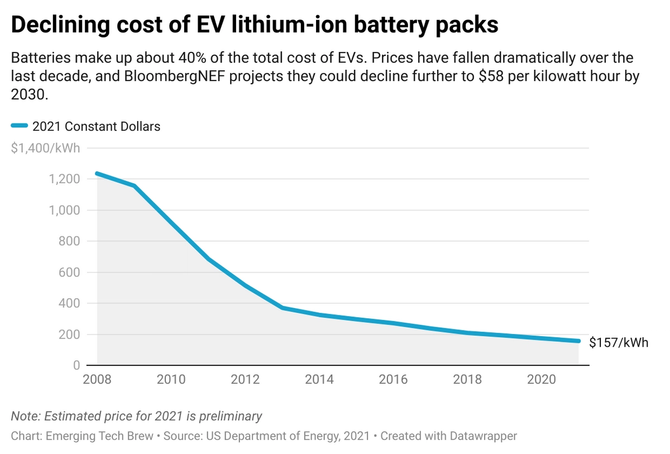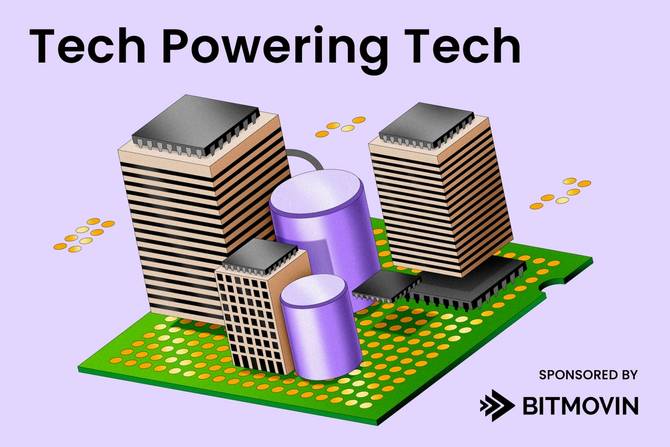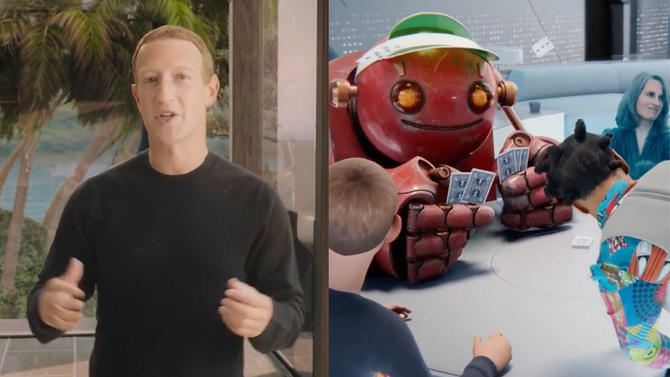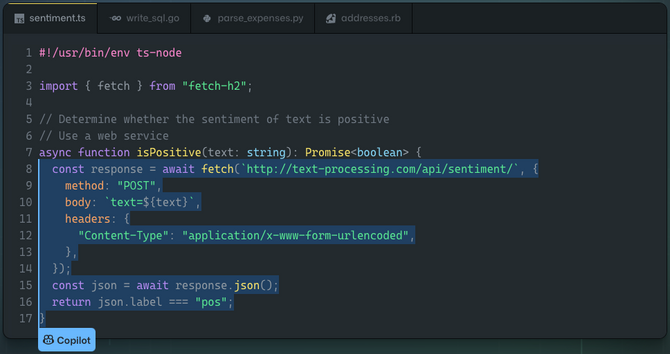Happy Friday. The last time we asked you all to weigh in on something, we got, literally, ~100 emails.
We’re soliciting your responses to something again today, but in a more orderly fashion—read to the bottom and weigh in on our reader poll, a new, regular installment in this newsletter.
These polls aren’t going to provide scientific evidence of anything, but we think it’ll be fun to temperature check major tech issues with you, our tech-savvy audience. We’ll share the results of today’s poll next week.
In today’s edition:
 High-voltage charts High-voltage charts
 Meta’s metaverse Meta’s metaverse
 Data-center water Data-center water
—Grace Donnelly, Dan McCarthy
|
|
|
Francis Scialabba
Successfully electrifying our world and decreasing our dependence on fossil fuels will hinge on a simple, familiar tech: batteries.
“Batteries are a key technology in achieving our goals for decarbonization, as well as improving reliability and resilience in our energy supply chain,” Haresh Kamath, program manager for energy storage at the Electric Power Research Institute (EPRI), told Emerging Tech Brew.
Zoom in: That’s especially true as it relates to electric vehicles, which largely run on lithium-ion batteries today. As companies rush into the rapidly growing EV industry, more resources than ever before are focused on making batteries more efficient, more affordable, and more widely available.
We put together five charts that outline some of the challenges and opportunities facing battery technology in the coming years, from scaling mining operations to squeezing more range out of battery cells.
Read on for one of the charts and blurbs below, and click here to see the full piece.
The plunging cost of EV batteries
The price of lithium-ion battery packs fell 87% between 2008 and 2020, according to the US Department of Energy. Analysis from BloombergNEF estimated the average price of a battery was $137 per kilowatt hour last year. Most experts say getting the cost below $100/kWh will signify that EVs are about as affordable as combustion engine vehicles.
- “The economics of this is very straightforward: As the volume increases, the cost falls,” Kamath said. “Manufacturing cost has fallen substantially.”
 He anticipates another 50% reduction in cost from 2020 to 2030, with more efficient manufacturing techniques and battery-pack designs continuing to drive down prices.
- And as more advanced batteries are developed, the market will see a divergence in cost between very high-performance cells and those that can be produced more cheaply.
For example...Tesla has decided to use lithium-iron-phosphate (LFP) batteries in all of its standard-range cars moving forward. These batteries have a lower energy density than lithium-ion cells made with materials like nickel and cobalt, but are also much cheaper to produce. It’s also pursuing a new battery design with Panasonic, dubbed 4860, that would provide significantly more power for some of its other models.
Click here to see all five charts and read the full piece.—GD
|
|
|
Facebook Connect
Yesterday, at its annual AR/VR conference Connect, Facebook announced its vision for the metaverse, which CEO Mark Zuckerberg defined as “an embodied internet where you’re in the experience, not just looking at it.” Oh, right—it also renamed itself Meta.
Some argue FB’s metaverse embrace is a PR-driven diversion from the multi-directional scrutiny it is facing at the moment. Be that as it may, nearly 20% of its workforce—or about 10,000 employees—actually works on AR/VR.
-
It also says it’s hiring another 10,000 people over the next five years to work on the metaverse in Europe, and that it’ll spend $10 billion this year on related projects.
Connect was light on concrete AR/VR announcements, but here’s a quick roundup of the product-oriented updates. The company unveiled...
-
Plans for a higher-end VR headset, for now dubbed Project Cambria and slated to roll out in 2022.
-
A new AR/VR developer platform called the Presence Platform, which will make it easier for devs to build apps for the metaverse. It consists of three SDKs that will help with things like scale, hand-tracking, and voice.
- Horizon Home, a more social version of the current VR headset home screen, and Horizon Marketplace, to buy and sell digital goods. They’ll join Horizon Workrooms, its VR meetings app that went live earlier this year, and Horizon World, a world-building app that’s been in beta since last year.
- The Oculus brand will be sunset in 2022, and all headsets will have Meta branding (e.g., Meta Quest).
Bottom line: This year’s event was largely about selling the vision of Meta. Zuckerberg said on the call that the timeline for people to begin really using the metaverse is five to 10 years out—we’ll see between now and then if the company can deliver on that prediction.
Click here to view this story on-site.—DM
|
|
|
Maybe you’re a veteran finance and crypto trader, maybe not so much. But even non-traders know that 25 buckeroos for a single credit card transaction is an excellent exchange.
And that’s exactly what BlockFi’s offering. When you get their credit card, $25 will go right into your pocket, in addition to 3.5% cash back in the first three months. If you’re the type who loves to squeeze every little bit of juice out of rewards programs, you should definitely check this out.
FYI, BlockFi just upped its rates on all stablecoins. You see, BlockFi continually sets rates for lending and borrowing based on market dynamics. You can read all about the latest decision here.
Learn more about BlockFi today.
|
|
|
Unsplash
What occupies hundreds of thousands of square feet, is full of servers, and thirstier than a sodaless, popcorn-eating moviegoer? A data center.
But, but, but: On Wednesday, Microsoft announced that it’d reduce the amount of water its data centers use by 95% by 2024, and net produce water by the end of the decade.
Data centers power computationally intensive but ubiquitous tech, like AI, machine learning, and cloud computing. They also regularly use massive amounts of water to cool their servers, via a process called “evaporative cooling,” which typically kicks in when outside temperatures top 85 degrees Fahrenheit.
-
The typical data center uses 3–5 million gallons of water per day, equivalent to a city of 30k–50k people, NBC News reports.
-
And as more and more companies cloudify their operations, server warehouses are only growing more common: Microsoft alone will build 50–100 new data centers a year, The Verge reports.
Microsoft’s water-reduction strategy is twofold, per The Verge: For one, after running tests on its systems, the company will set higher limits for when evaporative cooling kicks in. And in super-hot environments, like the desert regions many data centers are built in, it plans to use immersion cooling, a less water-intensive process that cools servers by dunking them in a specialized liquid bath.
Zoom out: Google has also said it wants to net produce water by 2030, specifically 120% of what it consumes. Amazon notes that it has “optimized these cooling systems to minimize water usage,” but has no specific commitments listed.
- Amazon and Google didn’t respond to requests for comment as to whether they’ll commit to similarly aggressive water goals by 2024.
-
Together, the three companies account for the majority of “hyperscale” data centers in the US.
Click here to view this story on-site.—DM
|
|
|
|
Sea the potential. The ocean covers 71% of Earth’s surface, and most of that water is absolutely teeming with energy. In fact, potential energy generated each year by waves hitting the US coastline is up to 2.64 trillion kilowatt-hours—aka two-thirds of the country’s yearly energy consumption. Researchers are figuring out how to harness this power and turn it into a viable renewable energy source, thanks to advancements in AI and supercomputing. Read more about how this tech is helping scientists ~dive deeper~.
|
|
|
Github Copilot
Stat: Up to 30% of new code on GitHub has been written with assistance from Copilot, the code-generation tool it released in June, in partnership with OpenAI.
Quote: “It’s a perfect violent storm as far as meeting the demand that we’re going to have. It’s no small problem.”—Michael Johnston of the National Electrical Contractors Association, re: the problematic prevalence of outdated electrical grid equipment
Read: Could your group chat be worth millions?
Covid changed the contact center. The space has evolved big time during the pandemic to adapt to shifting organizational needs and customer expectations. Find out more about those seismic changes in this webinar from Dialpad, Intercom, and CareLinx.*
*This is sponsored advertising content
|
|
-
GlobalFoundries IPO’d, fetching a share price at the top of its range.
-
Uber is a surprise beneficiary of the Hertz–Tesla deal from earlier this week—Hertz will make half of the 100,000 Teslas it ordered available for Uber drivers.
-
FTC staff are reportedly taking a look at the Facebook Papers.
-
Samsung reported Q3 earnings, and it posted record-high revenue, as the chip crisis wears on.
|
|
Three of the following news stories are true, and one...we made up. Can you spot the odd one out?
-
Shiba inu coin—separate from dogecoin—now has a market cap in the tens of billions.
-
A high-school student created a deepfake that allowed her to skip Zoom class for a full week before being caught.
-
Crypto investors can now bid for the right to touch a very heavy Tungsten cube once a year.
-
A Silicon Valley startup wants to turn human blood cells into eggs.
|
|
Hello to all of you who made it to the bottom. It’s time to give us your opinion on an important emerging-tech question—we’ll share the results next week.
Click here to weigh in on drone delivery.
|
|
Catch up on the top Emerging Tech Brew stories from the past few editions:
|
|
|
We have no knowledge of a high-schooler deepfaking their way out of Zoom school.
|
|
|
Written by
Grace Donnelly and Dan McCarthy
Was this email forwarded to you? Sign up
here.
|
ADVERTISE
//
CAREERS
//
SHOP
//
FAQ
Update your email preferences or unsubscribe
here.
View our privacy policy
here.
Copyright ©
2021
Morning Brew. All rights reserved.
22 W 19th St, 8th Floor, New York, NY 10011
|
|










